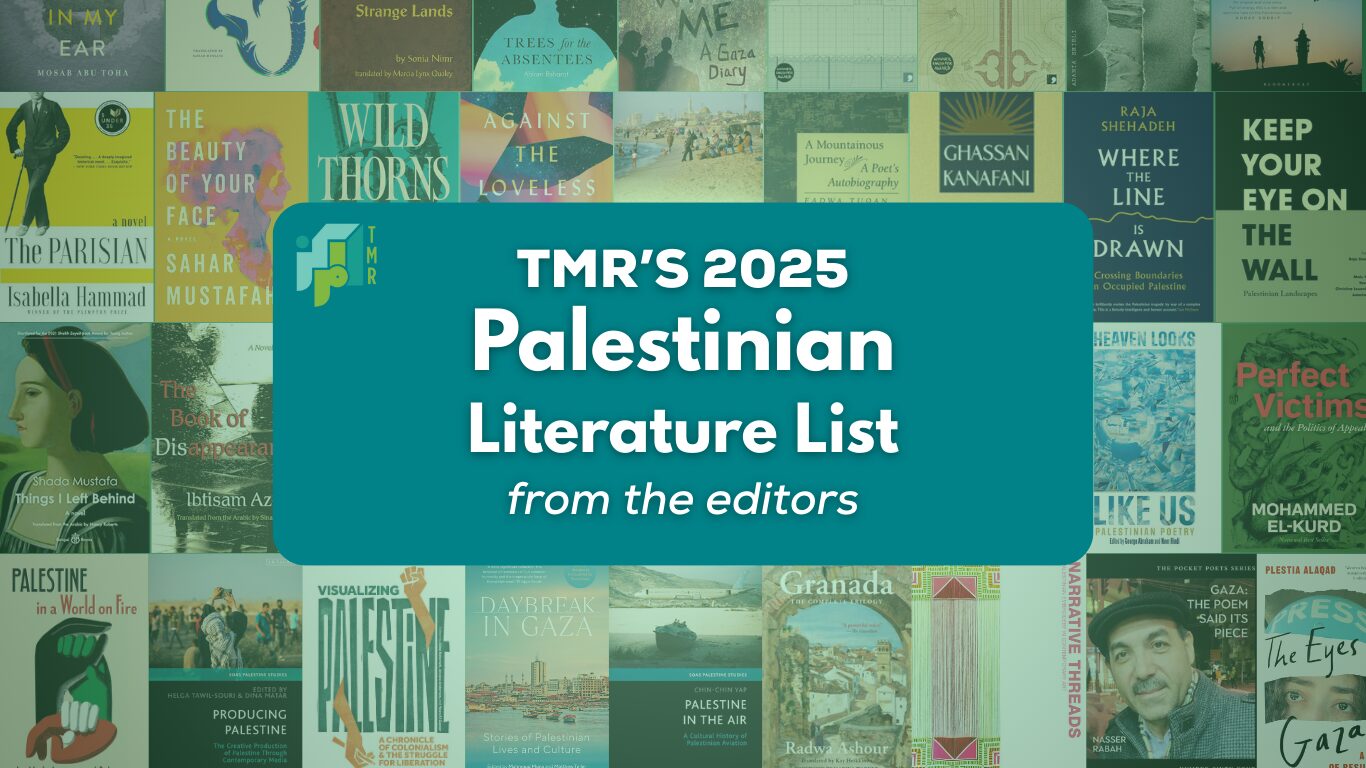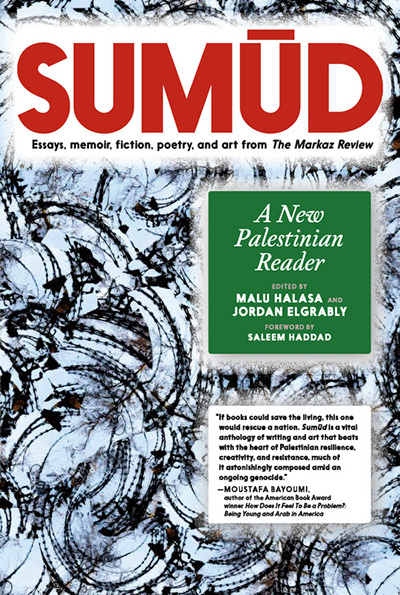May 15, 2025 is the 77th commemoration of the Nakba, the day in 1948 that Palestinians suffered their worst catastrophe up to that time. With today’s genocide in Gaza and the creeping Nakba in the West Bank, it is clear that 1948 never ended — until now, we see the systematic ethnic cleansing of Palestinians from their land. In good conscience we must continue to demand a permanent ceasefire, an end to all arms sales to Israel, and justice for the Palestinian people. The editors welcome your suggestions as we grow this list over time, which you can post in the comments below. For more suggested reading, discover our 2023 Palestinian Lit Lit from the editors.
Sumūd: A New Palestinian Reader edited by Malu Halasa and Jordan Elgrably (Seven Stories Press, 2025)
An anthology that celebrates the power of culture in Palestinian resistance, with selections of memoir, short stories, essays, book reviews, personal narrative, poetry, and art. Includes twenty-five black-and-white illustrations by Palestinian artists.
The Arabic word sumūd is often loosely translated as “steadfastness” or “standing fast.” It is, above all, a Palestinian cultural value of everyday perseverance in the face of Israeli occupation. Sumūd is both a personal and collective commitment; people determine their own lives, despite the environment of constant oppressions imposed upon them.
In times of devastation, poetry, literature, and art are the mediums through which oppressed peoples reveal cherished aspects of their existences and remain defiant in the fight for self-determination. Sumūd: A New Palestinian Reader honors the Palestinian spirit and its power in the face of dispossession and war. When governments around the world enable the genocide of a people and the dilapidation of a sacred homeland, the Palestinian people stand fast and resist. The fifty-eight contributions in this collection remind readers that just as love perseveres, so do the Palestinians, and their struggles and triumphs.
Forest of Noise by Mosab Abu Toha (Penguin, 2024)
by Mosab Abu Toha (Penguin, 2024)
Moving between glimpses of life in relative peacetime and absurdist poems about surviving in a barely livable occupation, Forest of Noise invites a wide audience into an experience that defies the imagination—even as it is watched live. Abu Toha’s poems introduce readers to his extended family, some of them no longer with us. This is an urgent, extraordinary, and arrestingly whimsical book. Searing and beautiful, it brings us indelible art in a time of terrible suffering.
We Are Not Numbers by Ahmed Alnaouq and Pam Bailey (Penguin, 2025)
by Ahmed Alnaouq and Pam Bailey (Penguin, 2025)
A teenage girl stares at her roof, hoping it won’t collapse over her head. A young student searches the Internet for photos of libraries around the world, hoping he’ll be able to visit them one day. Another walks around the city, taking notes of all the buildings she dreams of repairing.
These are the stories of young people from Gaza, born under Israeli occupation and blockade. They are people who have endured unspeakable struggles and losses, who keep fighting to be recognised not as numbers, but as human beings with hopes, dreams and lives worth living.
We Are Not Numbers was founded in 2014 to give voice to the youth of Gaza. In this collection, vital, urgent and full of heart, spanning over ten years to the present moment, we gain an unparalleled insight into the past, as well as the current and next generation of Palestinian leaders, artists, scientists and scholars and imagine where we might go from here.
Heaven Looks Like Us edited by George Abraham and Noor Hindi (Haymarket, 2025)
A love letter to Palestinian ancestors, their descendants, and their land, to all anti-colonial and anti-imperialist struggles, to a history that will never be forgotten, and to a future in which there thrives a free, free Palestine.
Poetry has always served as a mode of resistance in Palestinian culture. In defiance of dispossession and decades of military siege, of a nakba that never ended, of historical and cultural obfuscation, of unrelenting violence and thousands of martyred people, the “power to narrate,” as Edward Said wrote, remains a necessary tool for self-determination. The poems collected here reclaim that power, bridging borders, languages, and generations to forge new conversations around resistance and liberation.
HEAVEN LOOKS LIKE US is a battle-cry against the annihilation of a people. As Palestinian history remains haunted by exile, violence, and grief, so, too, are the poems in this anthology. And yet, editors George Abraham and Noor Hindi present these realities alongside other themes that are also true: queer and feminist perspectives, eco-poetry, meditations on love and time, and lineages of protest. This anthology dares to imagine a future beyond a nation-state for Palestinian people everywhere. Contributors include Refaat Alareer, Mahmoud Darwish, Naomi Shihab Nye, Mohammed El-Kurd, A.D. Lauren-Abunassar, Lena Khalaf Tuffaha, Hala Alyan, Fady Joudah, and Heba Abu Nada, and many other voices, both established and ascending.
Perfect Victims and the Politics of Appeal by Mohammed El-Kurd (Haymarket Books, 2025)
by Mohammed El-Kurd (Haymarket Books, 2025)
Perfect Victims is an urgent affirmation of the Palestinian condition of resistance and refusal―an ode to the steadfastness of a nation.
Palestine is a microcosm of the world: on fire, stubborn, fragmented, dignified. While a settler colonial state continues to inflict devastating violence, fundamental truths are deliberately obscured—the perpetrators are coddled while the victims are blamed and placed on trial.
Why must Palestinians prove their humanity? And what are the implications of such an infuriatingly impossible task? With fearless prose and lyrical precision, Mohammed El-Kurd refuses a life spent in cross-examination. Rather than asking the oppressed to perform a perfect victimhood, El-Kurd asks friends and foes alike to look Palestinians in the eye, forgoing both deference and condemnation.
How we see Palestine reveals how we see each other; how we see everything else. Masterfully combining candid testimony, history, and reportage, Perfect Victims presents a powerfully simple demand: dignity for the Palestinian.
Palestine in a World on Fire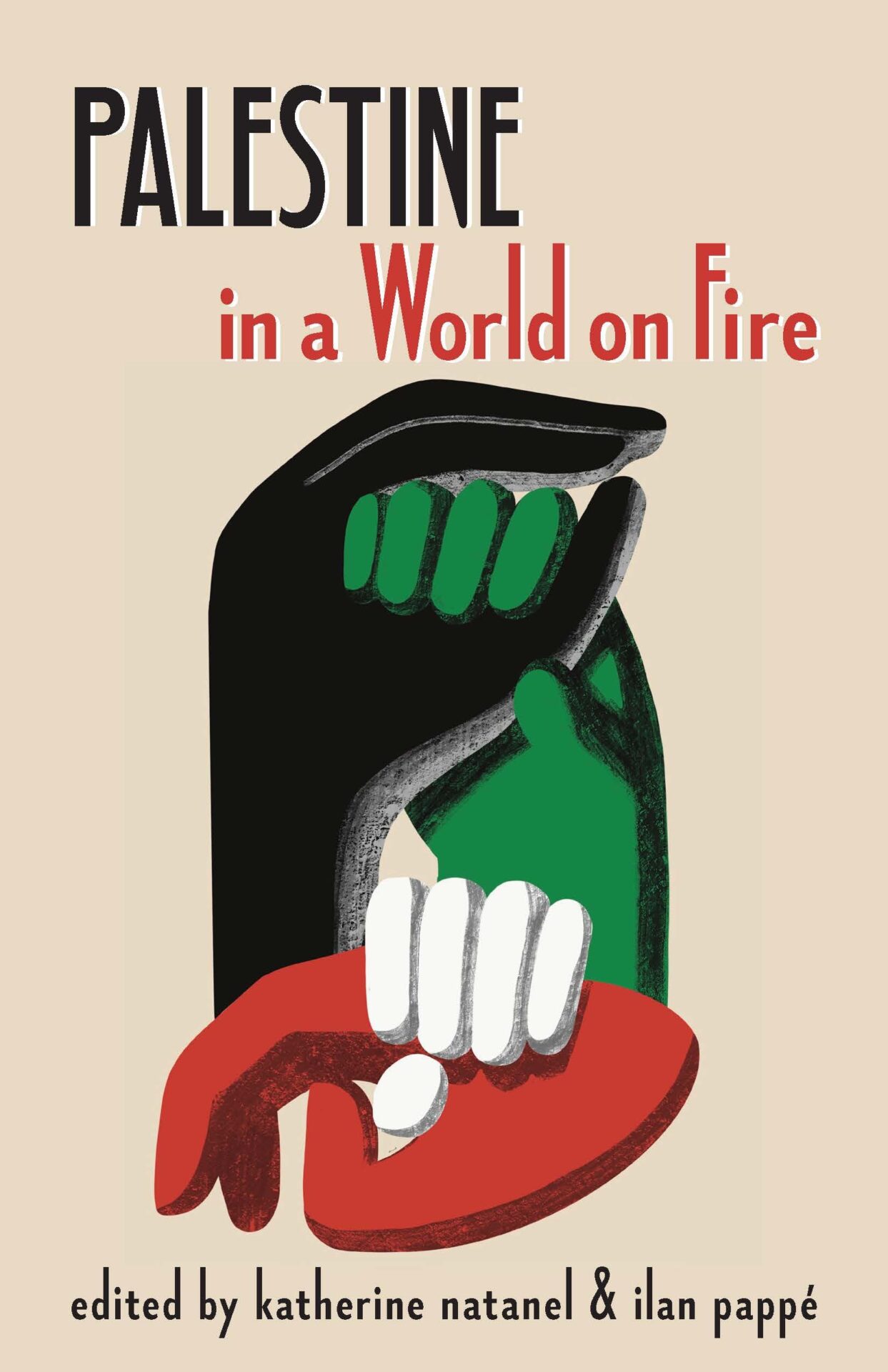 , eds. Ilan Pappé, Katherine Natanel, and Laleh Khalili (Haymarket Books, 2025)
, eds. Ilan Pappé, Katherine Natanel, and Laleh Khalili (Haymarket Books, 2025)
A collection of interviews with some of the world’s leading progressive thinkers on the movement for Palestinian liberation and its connections to struggles for justice across the globe.
As more and more people align themselves with the Palestinian people, Palestine in a World on Fire provides the global perspective and analysis needed to inform how we forge ahead on this path of newfound solidarity. Editors Ilan Pappé and Katherine Natanel have gathered a collection of interviews that are intimate, challenging, and rigorous—many of them conducted before October 7th but still startlingly prescient. The interviewees connect the struggle for Palestinian liberation to various liberatory movements around the world, simultaneously interrogating and recontextualizing their own positions given the ongoing aggression in Palestine. This incredible group includes Angela Y. Davis, Noam Chomsky, Judith Butler, Nadine El-Enany, Gabor Mate, Mustafa Barghouti, Yanis Varoufakis, Paul Gilroy, Elias Khoury, Gayatri Spivak, and Nadera Shalhoub-Kevorkian.
Palestine in a World on Fire highlights the centrality of Palestine in struggles shared across the world: capitalism, imperialism, misogyny, neo-colonialism, racism, and more. Each conversation tackles urgent events and unfolding dynamics, and the scholar-activists interviewed here provide invaluable perspectives and insights, illuminating the richness and relevance of recent scholarship on Palestine.
Producing Palestine: The Creative Production of Palestine Through Contemporary Media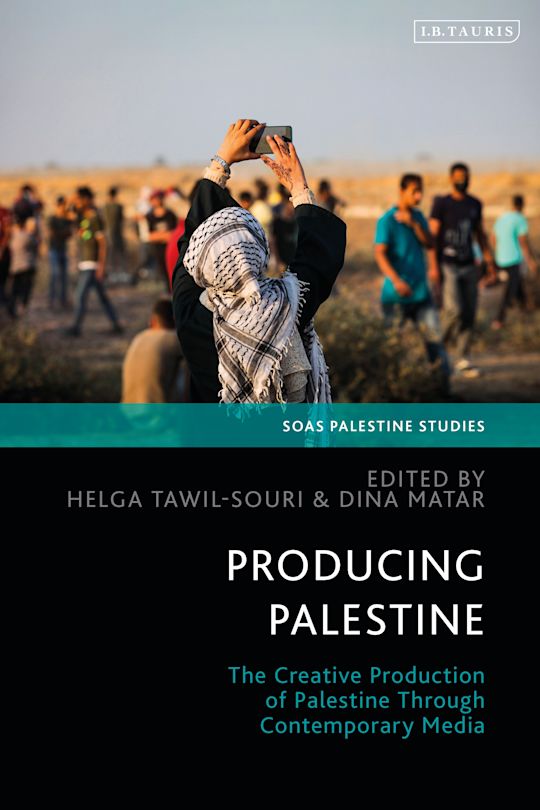 (SOAS Palestine Studies) eds. Dina Matar and Helga Tawil-Souri (Bloomsbury, 2024)
(SOAS Palestine Studies) eds. Dina Matar and Helga Tawil-Souri (Bloomsbury, 2024)
Palestine has often been defined and constructed in the global imaginary through conflict, resistance, oppression and violence. Its representation is so overridden with conflicting claims and associations that it remains inaccessible, even to Palestinians. Producing Palestine addresses the creative labour of producing Palestine, particularly in technological and media spaces that are defined by their porousness and by their intermediality – crossing genres of popular culture and disciplinary boundaries.
It offers sixteen ‘cases’ which collectively conceptualize, engage in, and invite readers to participate in the production of Palestine and its theorization. These cases cover a wide array of spaces of production such as poster art, TikTok, virtual technologies, digital mapping, drone footage, online cooking shows, documentaries, music videos and many more. Producing Palestine contends that representations of Palestine carry a multitude of meanings, that Palestine is continually produced and reproduced, dynamically generating new knowledge production across media, languages, temporalities, geographies and disciplines.
Visualizing Palestine: A Chronicle of Colonialism and the Struggle for Liberation , eds. by Jessica Anderson, Aline Batarseh, and Yosra El Gazzar (Haymarket Press, 2024)
, eds. by Jessica Anderson, Aline Batarseh, and Yosra El Gazzar (Haymarket Press, 2024)
This striking collection of more than 200 full-color infographics is a vivid portrait of Israeli settler colonialism and the Palestinian struggle for freedom.
As a new generation of movement-builders seek to understand Israel’s brutal, illegal occupation of Palestine, Visualizing Impact’s vivid and informative graphics reveal deep truths about the decades-long Palestinian struggle for freedom.
The infographics present more than just data: colorful, accessible, and thoughtfully arranged, the oppression they document in stark detail dovetails with stories of perseverance and strength. From the history of Zionist settlement to the depopulation of Palestinian villages; from the construction of an apartheid wall to the destruction of olive trees; from hunger strikes to mass protests to boycotts, Visualizing Palestine’s graphics are powerful, comprehensive, and demand our attention.
Daybreak in Gaza: Stories of Palestinian Lives and Culture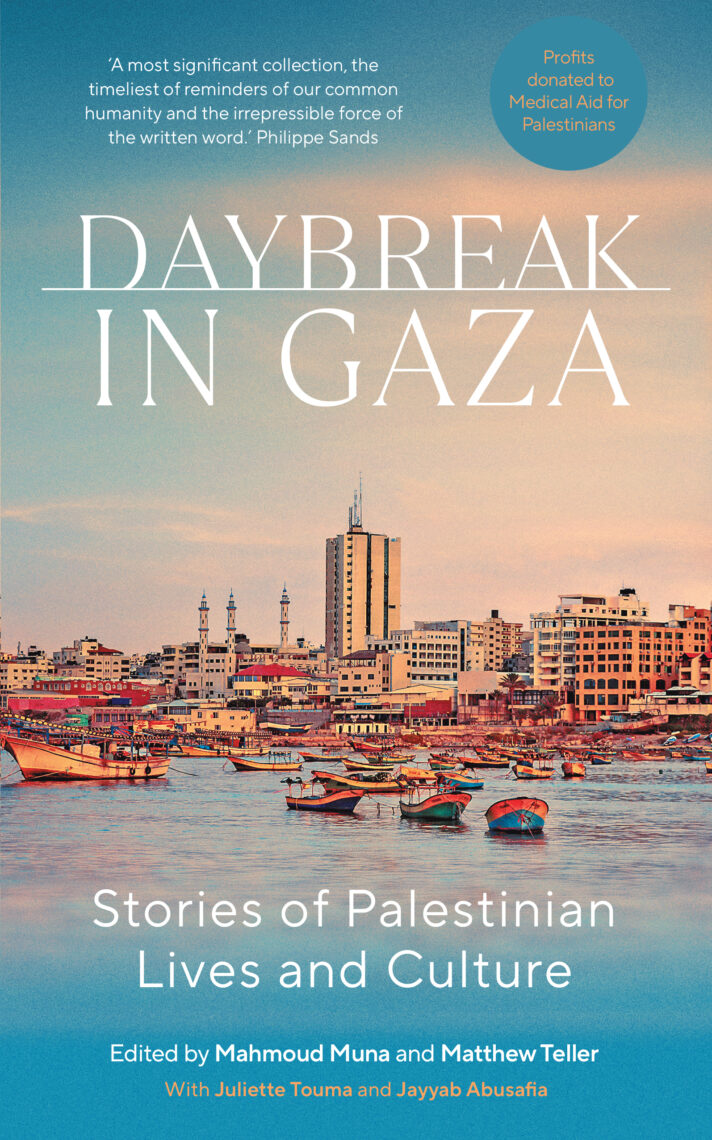 , eds Mahmoud Muna and Matthew Teller, with Juliette Touma and Jayyab Abusafia (Saqi Books, 2024)
, eds Mahmoud Muna and Matthew Teller, with Juliette Touma and Jayyab Abusafia (Saqi Books, 2024)
‘A city so rich in trees it looks like a cloth of brocade spread out upon the land.’ Shamsaddin al-Dimashqi, geographer (1256–1327)
This is Gaza – a place of humanity and creativity, rich in culture and industry. A place now utterly devastated, its entire population displaced by a seemingly endless onslaught, its heritage destroyed.
Daybreak in Gaza is a record of an extraordinary place and people, and of a culture preserved by the people themselves. Vignettes of artists, acrobats, doctors, students, shopkeepers and teachers offer stories of love, life, loss and survival. They display the wealth of Gaza’s cultural landscape and the breadth of its history.
Daybreak in Gaza humanises the people dismissed as statistics. It stands as a mark of resistance to the destruction and as a testament to the people of Gaza.
Palestine in the Air: A Cultural History of Palestine Aviation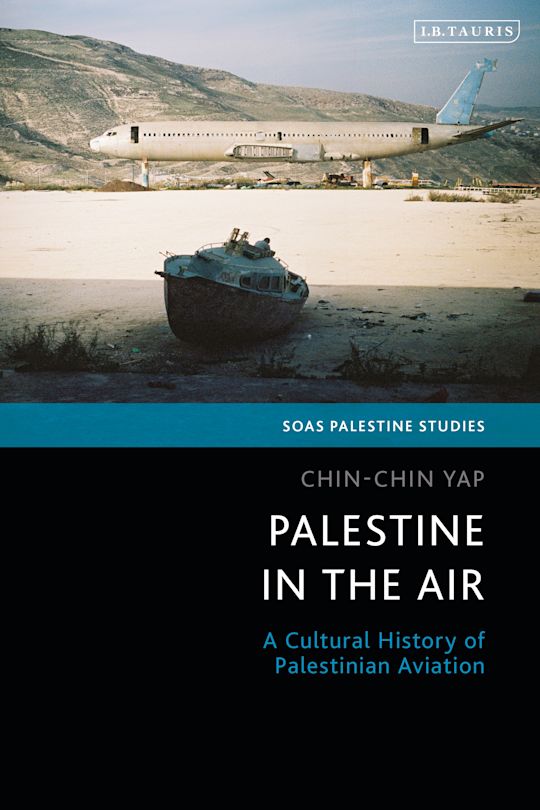 by Chin-chin Yap (Bloomsbury, 2025)
by Chin-chin Yap (Bloomsbury, 2025)
As the first cultural history of Palestinian aviation, Palestine in the Air reveals civil aviation’s role in the ‘question of Palestine’ over the past century.
How do Palestinians-as individuals, communities, and as a nascent state-engage with the air? How does their systemic exclusion from aerial agency inform dominant and counter-narratives of culture and modernity?
International civil aviation is a powerful tool for the disenfranchisement of Palestinian statehood, connectivity, and mobility. Yet, Palestinians have constantly sought to harness aviation as a legitimate component of modern state-building. They have also creatively appropriated aviation technologies including balloons, kites, and drones as instruments of resistance, exploiting flight’s symbolic qualities of escape and liberation to highlight the injustices of occupation.
Using an interdisciplinary approach that draws on media studies, cultural studies, critical theory, diplomacy, and history, Palestine in the Air examines civil aviation’s political, social, and cultural impact upon the Palestinian quest for sovereignty. The book makes use of an unprecedented range of aviation-related sources spanning unpublished memoirs, print and image archives, interviews, art, film, literature, poetry, and stand-up comedy.
Gaza: The Poem Said Its Piece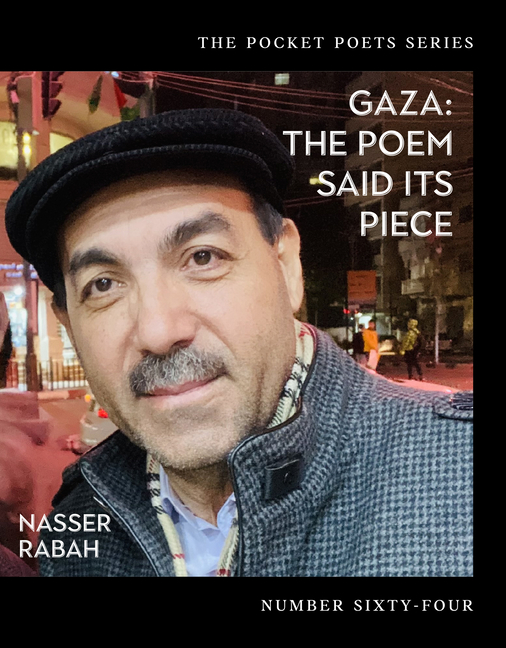 by Nasser Rabah, translated by Ammiel Alcalay, Emna Zghal, and Khaled Al-Hilli (City Lights, 2025)
by Nasser Rabah, translated by Ammiel Alcalay, Emna Zghal, and Khaled Al-Hilli (City Lights, 2025)
Born in Gaza in 1963, Rabah spent some of his formative years in Egypt, before returning to Gaza in his early twenties, where he has lived ever since. There, among the generations who built its neighborhoods and populate its villages, in a place of great natural beauty and vibrant cities, living under constant surveillance, military occupation, blockade, siege and regular attack, in a culture steeped in literary and spiritual tradition, Rabah developed his distinctively singular vision and poetics.
This is Rabah’s first book in English translation. The poems include a selection from three of his published collections, along with new poems written after October 2023, during the full-scale Israeli assault on Gaza. Throughout, we find a combination of irreverence and fidelity to tradition, a sense of surrealism infusing the depiction of everyday incomprehensibilities, and an unsettling, delicate tenderness always on edge in an atmosphere of sensory inundation and emotional saturation. Rabah’s poems can be raw and uninhibited by social or literary conventions, exploring and questioning one’s relationship to divinity in absurd circumstances while confronting the sacred cows of his own society, along with the sometimes voyeuristic interest from those on the outside of it. His poetry constantly interrogates–sometimes playfully and sometimes in utter existential despair–the paradoxes and difficulties of expression and of writing itself. Nasser Rabah is a poet we have much to learn from.
Narrative Threads: Palestinian Embroidery in Contemporary Art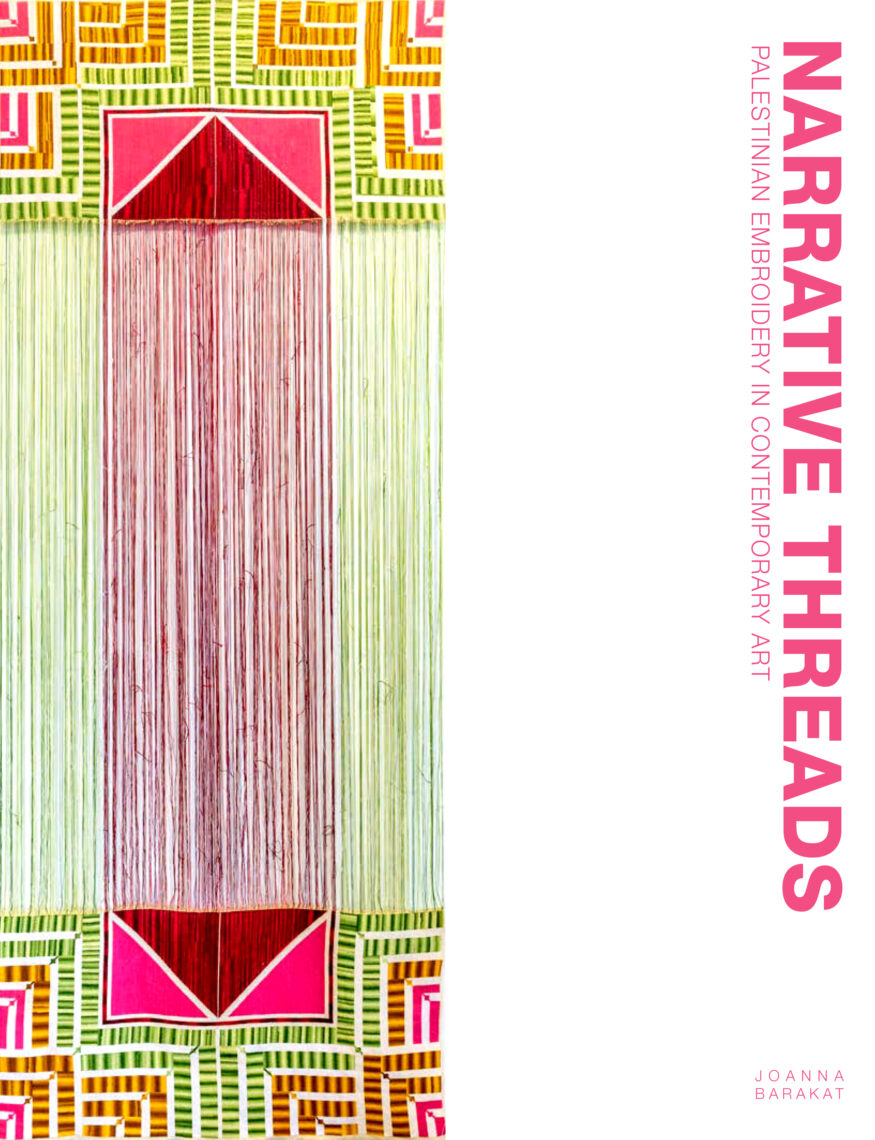 by Joanna Barakat (Saqi Books, 2025)
by Joanna Barakat (Saqi Books, 2025)
For centuries, Palestinian women wrote the stories of their lives and land with a needle and thread. Their embroidery, or tatreez, inspired hundreds of artists who reinterpreted and transformed it into a symbol of Palestinian identity, steadfastness and resistance.
Narrative Threads celebrates the immense beauty and significance of Palestinian embroidery in contemporary art. It documents and features over 200 works by twenty-four established and emerging artists, who incorporate the motifs and symbolism of tatreez through a variety of media – from painting, sculpture and textile to film, photography and street art. Some use traditional imagery, while others reimagine this to express ideas about time, space and memory, all of them challenging colonialist constructs as well as celebrating Palestinian identity.
With insightful essays by leading art historians Dr Tina Sherwell, Wafa Ghnaim and Rachel Dedman, Narrative Threads reveals the power of Palestinian embroidery as a visual language that recounts the past, connects us to the present and envisions a different, hopeful future.
The Eyes of Gaza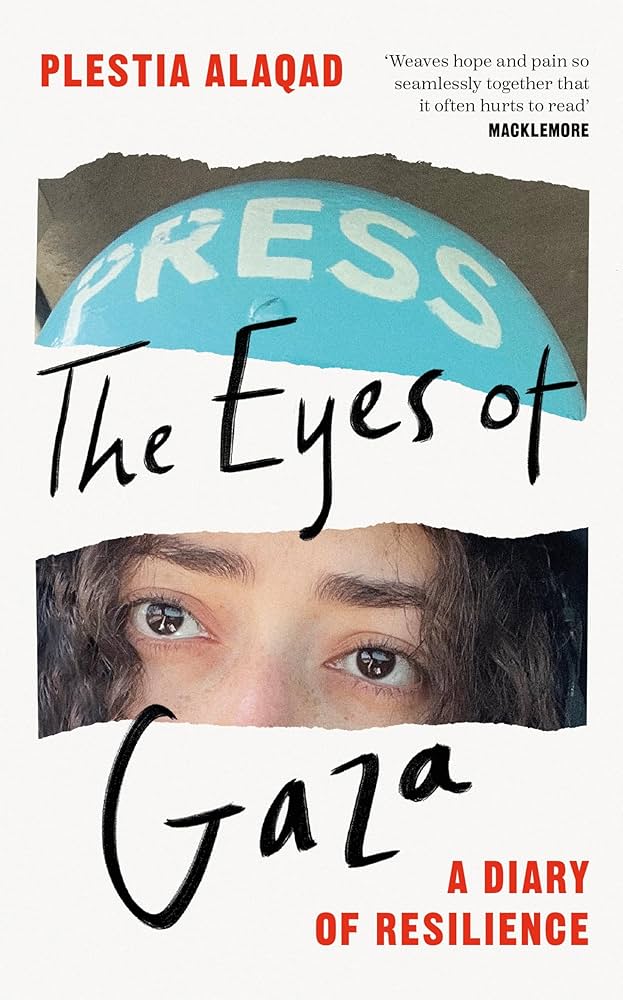 by Plestia Alaqad (Pan Macmillan, 2025)
by Plestia Alaqad (Pan Macmillan, 2025)
In early October 2023, Palestinian Plestia Alaqad was a recent graduate with dreams of becoming a successful journalist. By the end of November, her social media posts depicting daily life in Gaza, amid Israel’s deadly invasion and bombardment, would profoundly move millions of people. She would be internationally known as the ‘Eyes of Gaza’.
Written as a series of diary extracts, The Eyes of Gaza relates the horrors of her experiences while showcasing the indomitable spirit of the men, women and children who share her communities. From the epicentre of turmoil, while bombs rain around her and devastation grips her people, she is witness to their emotions, their gentle acts of quiet, necessary heroism, and the moments of unexpected tenderness and vulnerability amid the chaos.
Through the raw honesty and vulnerability of a normal 21-year-old woman trying to make her way through a human tragedy, The Eyes of Gaza is a potent reminder of the horrors of violence and a powerful testament to the human spirit. It recounts a harrowing experience, but it is not a heart-breaking lamentation. Rather, it is a deeply intimate love letter to a girl’s home: demolished before her eyes, yes, but forever present in her heart.



